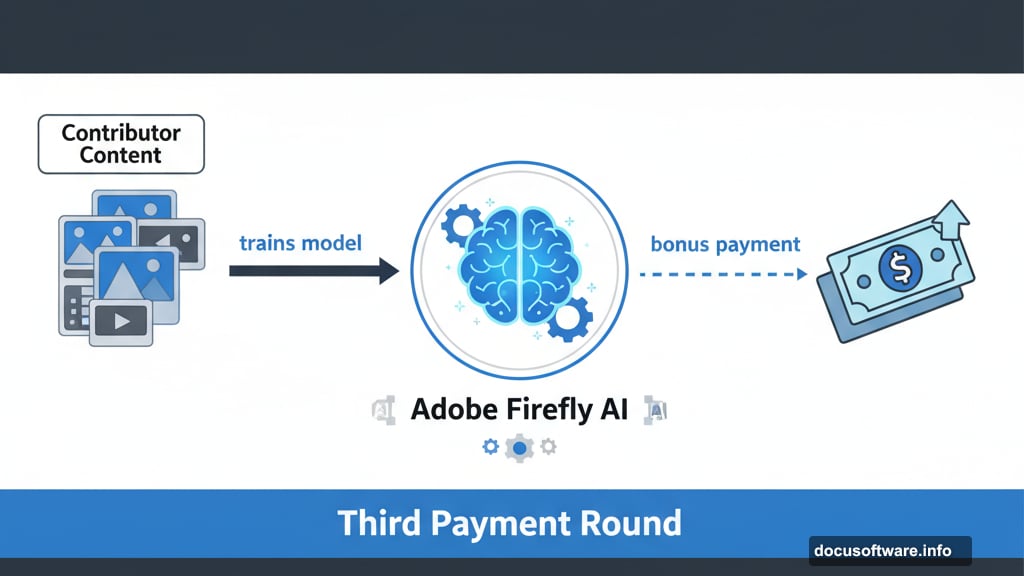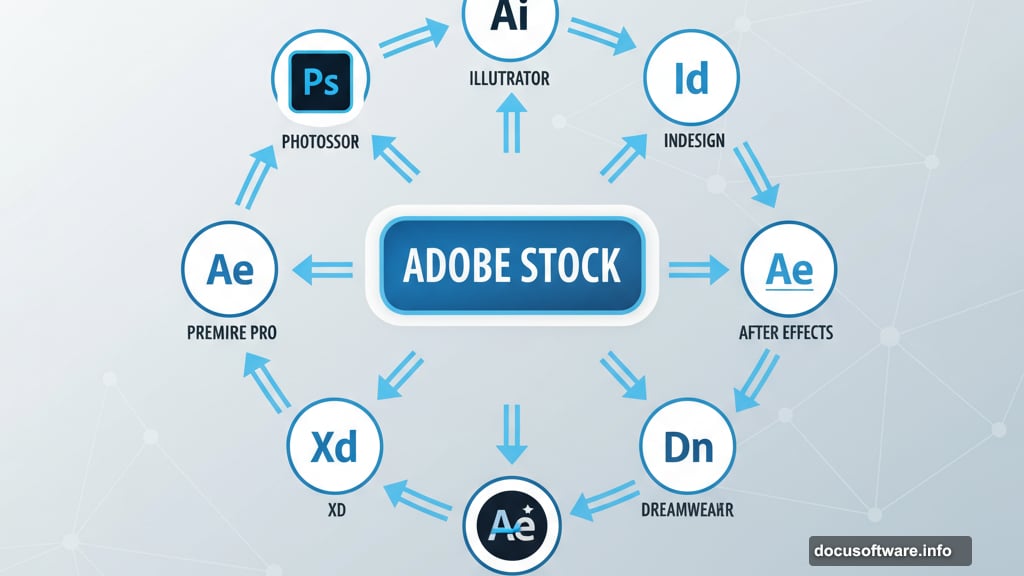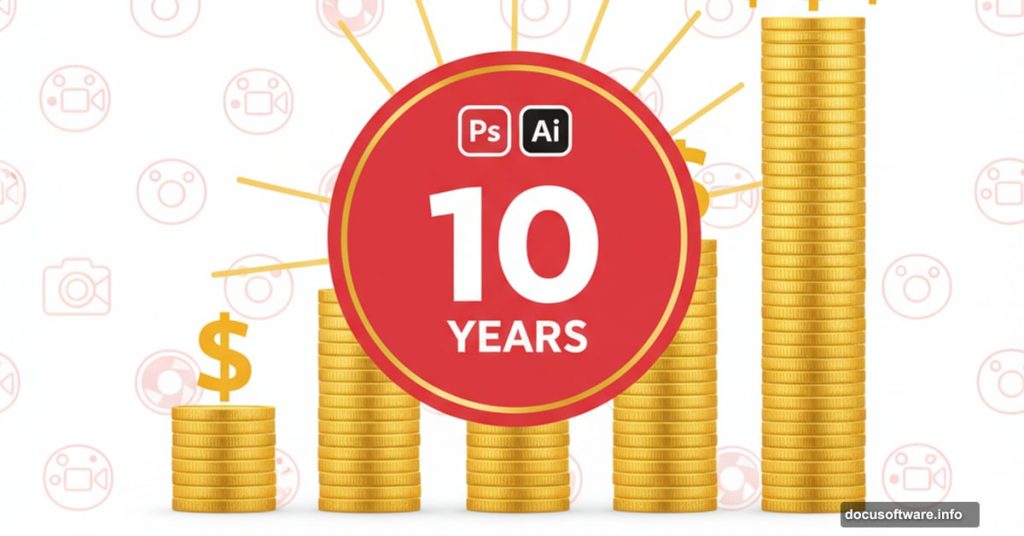Adobe Stock turned a decade old this year. The milestone matters because the platform quietly reshaped how creative professionals find and use content.
But here’s what’s really interesting. Adobe isn’t celebrating with cake and confetti. Instead, they’re rolling out new income streams for the photographers, videographers, and artists who supply the content. Plus, they’re making it easier for creators to find exactly what they need without endless scrolling.
The timing makes sense. Stock photography transformed over the past ten years from boring corporate headshots to genuinely useful creative assets. Now AI is shaking everything up again. So Adobe’s betting on flexibility and fair compensation to keep Contributors happy while the industry evolves.
Contributors Now Have More Ways to Get Paid
Traditional stock licensing still works. Upload a photo, someone licenses it, you get paid. Simple enough.
But Adobe just added two other revenue streams that didn’t exist before. And they’re paying out the third round of bonuses this week.
Firefly bonuses pay Contributors whose work trains AI models. Adobe was among the first platforms to do this. If your content helped train Adobe’s Firefly AI, you get compensated. The third payment drops tomorrow in the Contributor portal.
Most stock platforms don’t pay anything when AI companies train on creator content. Adobe’s approach recognizes that your work has value even when it’s teaching algorithms instead of appearing in final projects. That’s a significant shift in how the industry thinks about content value.
Missions offer targeted opportunities for specific content needs. When Adobe realizes they need more of something particular, they invite select Contributors to create it. You get the standard licensing fees plus an additional Mission payment.
Right now, Missions are limited. But Adobe plans to expand them over the coming months. So if you’re a Contributor, expect to see more opportunities to earn extra income by filling specific content gaps.
Your Stock Photos Now Show Up Everywhere
Adobe integrated Stock content across their entire product lineup. That means your uploaded assets can appear in multiple places, not just the Stock website.
Creative professionals can now preview and license Stock content directly inside Photoshop, Illustrator, InDesign, Premiere Pro, After Effects, XD, Dimension, and Dreamweaver. They don’t need to leave their workspace to find what they need.
Plus, Adobe Express users can now discover Stock content, templates, and design elements without switching apps. For Contributors, that’s more eyeballs on your work without any extra effort on your part.
More visibility generally means more sales. So this integration benefits Contributors even though they’re not doing anything differently. Their content just reaches more potential buyers automatically.
AI Tools Are Allowed, Not Required
Some stock platforms ban AI-generated content entirely. Others require disclosure. Adobe took a different approach.
Contributors can use whatever tools they want. Traditional photography? Great. AI generation? Also fine. A combination of both? Go ahead.

The policy reflects reality. Creative professionals already use AI for certain tasks while relying on traditional techniques for others. Forcing Contributors to choose one method would be artificial and limiting.
However, Adobe maintains strict commercial safety standards. The Firefly AI models train exclusively on licensed Adobe Stock content and public domain material where copyright expired. That means creators who license Stock content or use Firefly-generated assets don’t risk copyright infringement claims.
Compare that to some AI models trained on scraped internet content with unclear licensing. Adobe’s approach provides legal protection that matters when you’re creating commercial work.
Premium Content Gets Hand-Selected
Stock collections grew massive over the years. That creates a discovery problem. How do you find exceptional content when millions of assets exist?
Adobe launched their Premium collection to solve this. Real humans review and hand-select content based on quality, uniqueness, and subject rarity.
Premium content costs more to license. But it guarantees you’re not using the same generic image as everyone else. For brands that care about standing out, that’s worth paying extra.
Contributors benefit too. Getting assets into the Premium collection means higher payouts and increased visibility. It’s Adobe’s way of rewarding exceptional work instead of treating all content equally.
Customization Changed the Game
Ten years ago, you searched for stock content and hoped something matched your vision. Close enough usually had to be good enough.
Not anymore. Adobe built generative editing and variation tools directly into the platform. Found an image that’s almost perfect but needs tweaks? Generate the modifications you need.
This actually helps Contributors rather than replacing them. Your base content serves as the foundation. Creators then customize it for their specific projects. You still get paid for the license, and they get exactly what they need.
The model works because most customizations are small. Change the background color. Add an object. Adjust the composition slightly. Your original work remains central to the final result.
More Content Types Keep Expanding
Adobe Stock started with photos and basic illustrations. Now the collection includes videos, vectors, templates, 3D assets, GIFs, and audio.
Diversification matters because creative projects need more than just static images. A video editor needs footage and music. A web designer needs templates and icons. Offering everything in one place reduces friction.
For Contributors, it means more opportunities. If you create audio, 3D models, or motion graphics, Adobe Stock provides another marketplace to sell your work. You’re not limited to photography anymore.
The platform continues expanding content types too. So whatever format gains popularity next, Adobe will likely add it to Stock.
The Integration Strategy Makes Sense

Adobe owns the creative software most professionals use daily. Integrating Stock content directly into those tools was inevitable and smart.
Think about the creator’s workflow. You’re designing in Photoshop. You need a specific image. Previously, you’d open a browser, search Adobe Stock, download the image, then import it. Now you just search from within Photoshop and drop the image directly into your project.
That convenience matters. Reducing friction increases licensing. More licenses mean more money for Contributors. Everyone wins from seamless integration.
Adobe announced they’ll reveal more integration capabilities at their MAX conference October 28-30. Expect even tighter connections between Stock and other Adobe products.
Why This Approach Works
Adobe’s strategy balances two competing needs. Contributors want fair compensation and broad exposure. Creators want high-quality content that’s easy to find and legally safe.
Most platforms optimize for one side. Adobe’s betting that serving both well creates a sustainable ecosystem. Contributors keep uploading great content. Creators keep licensing it. The platform grows.
The AI bonus payments demonstrate this thinking. Adobe could train Firefly on Stock content without paying extra. Legally, they probably have the right through existing agreements. But they’re paying anyway because it maintains goodwill and acknowledges that contributor content has ongoing value beyond individual licenses.
That’s not altruism. It’s smart business. Happy Contributors upload better content more frequently. That improves the collection quality, which attracts more creators, which generates more revenue, which funds bigger bonus payments.
The cycle works as long as Adobe keeps both sides satisfied.
The Real Test Comes Next
Adobe Stock’s first decade succeeded because the platform launched when stock photography was terrible and improved it dramatically. Quality increased. Diversity expanded. Integration happened.
The next decade will be harder. AI generation threatens to flood the market with cheap content. Differentiation becomes crucial. Legal concerns around training data create uncertainty. Competition from other platforms intensifies.
Adobe’s position looks strong. They own the creative tools professionals use. They built AI models on licensed content. They’re paying Contributors fairly while expanding revenue streams.
But nothing’s guaranteed. The stock content industry will keep transforming. Whether Adobe Stock thrives for another ten years depends on whether they continue balancing contributor needs with creator demands while adapting to technological changes.
For now, the three new income streams and expanded integrations suggest they’re heading in the right direction. Contributors should see the third Firefly bonus payment tomorrow. That’s Adobe putting money behind their strategy, not just making promises.
